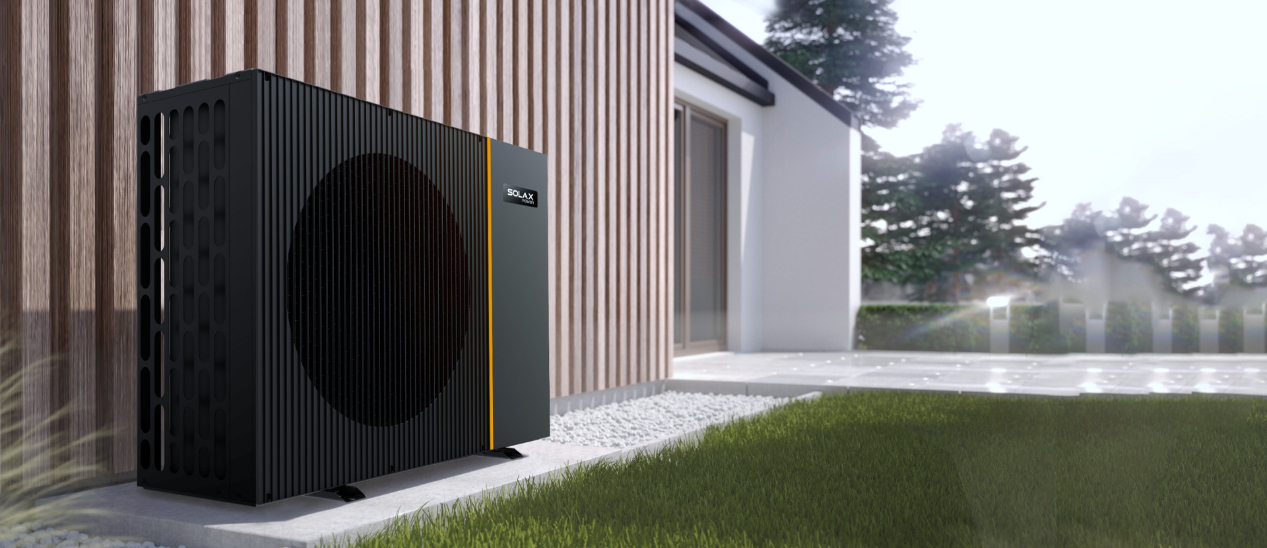As more homeowners seek efficient and sustainable heating solutions, solar assisted heat pump systems have risen to the forefront of green home technologies. By combining renewable solar energy with proven heat pump performance, these systems offer both energy savings and environmental benefits. Two of the most widely adopted solutions are the Solar Air Source Heat Pump (ASHP) and the Solar Ground Source (Geothermal) Heat Pump (GSHP). This article explores the core differences between the two to help homeowners choose the right system for their needs.
A solar assisted air source heat pump extracts heat from the outdoor air and transfers it indoors for space heating or hot water. The system is powered by solar panels, which provide clean electricity to run the compressor and other components. SolaX enhances this with intelligent solar integration, allowing the system to operate efficiently even during periods of low sunlight or colder temperatures. These systems are particularly suited for mild to moderate climates.
A solar powered ground source heat pump, also known as a geothermal solar hybrid system, draws thermal energy from beneath the earth's surface via buried pipes (ground loops). These loops tap into the consistent underground temperatures to provide highly efficient heating and cooling. When paired with solar power, the system becomes almost entirely renewable, making it an excellent long-term investment in sustainability.
Air Source Solar Pump Efficiency
Solar-assisted ASHP systems offer excellent performance in moderate climates. SolaX ASHP heating systems can achieve a Coefficient of Performance (COP) between 3.0 and 4.5, meaning they produce 3–4.5 times more energy than they consume. Their efficiency decreases somewhat in extremely cold environments but can still operate reliably with supplemental solar energy.
Geothermal Solar Pump Efficiency
In contrast, a solar source heat pump that utilizes ground energy maintains consistent high efficiency year-round. Ground source heat pumps typically achieve a COP of 4.5 to 5.0. Because underground temperatures are more stable than air temperatures, GSHP systems often outperform ASHPs in colder or more variable climates.
ASHP Systems
Solar heat pump for house installations using ASHPs are more affordable and easier to install. They don't require any ground excavation and are often chosen for retrofits or urban settings where space is limited. SolaX offers compact, high-performance units with smart integration, making them a practical choice for homeowners looking for quick, clean upgrades.
GSHP Systems
Solar assisted ground source heat pumps involve more complex and expensive installations, including drilling or trenching for ground loops. However, the long-term energy savings and operational stability often justify the upfront investment—particularly in new builds or properties with ample outdoor space."
Both ASHP and GSHP systems are far more sustainable than traditional gas or electric heating. When combined with SolaX solar technology, these systems operate with minimal environmental impact. Notably, SolaX systems use R290 refrigerant, an eco-friendly option with extremely low global warming potential (GWP), reinforcing the brand's commitment to green innovation.
ASHP systems reduce reliance on fossil fuels and perform well with solar backup for home. GSHP systems, powered by stable geothermal energy and clean electricity, offer near-zero emissions over their lifespan. For homeowners focused on carbon neutrality, either system—especially when solar-powered—is a strong step forward.
The choice between a solar assisted air source heat pump and a solar assisted ground source heat pump depends on several factors:
Climate: ASHPs are ideal for moderate regions; GSHP heat pumps excel in areas with extreme seasonal variation.
Budget: ASHP systems have lower upfront costs and faster payback. GSHPs offer superior long-term savings.
Space: GSHP heat pumps require outdoor space for ground loops, while ASHPs need only a wall or exterior unit space.
Sustainability Goals: Both systems, when integrated with SolaX solar PV, significantly reduce your home's carbon footprint.

Whether you choose an ASHP heating system or a GSHP heating system, integrating solar power with heat pump technology is a smart investment for the future. With SolaX's advanced engineering, renewable focus, and user-friendly design, you're not just heating your home—you're transforming it into a model of efficiency and environmental responsibility.
Ready to go solar? Discover how SolaX solar heat pump systems can power your home and your future.